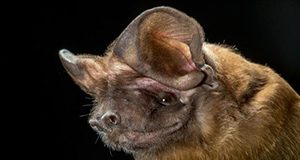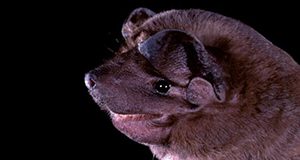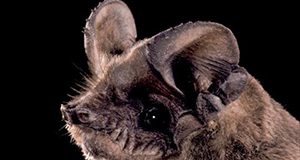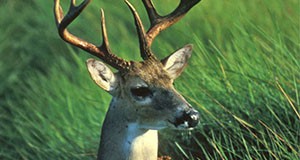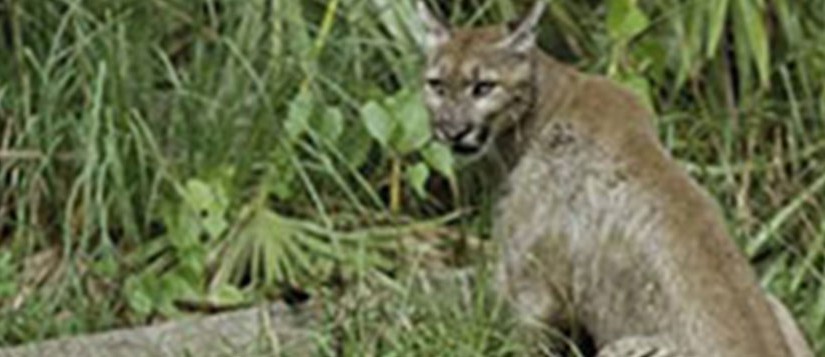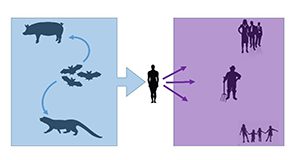
Bats benefit both natural ecosystems and people. Viruses that live in bats can harm people, but transmission of these pathogens from bats to humans can occur only when humans come too close to bats. Recently, misguided attempts to preserve human health have led to persecution of bats. In fact, however, what will keep people healthy is to protect bats and their habitat. This 4-page fact sheet written by Holly K. Ober and Samantha M. Wisely and published by the UF/IFAS Department of Wildlife Ecology and Conservation explains how protecting bat roosts can reduce the likelihood of future zoonotic disease pandemics while also increasing the natural pest reduction services bats provide as they consume insects that cause damage to agronomic crops as well as the mosquitoes that transmit diseases like Zika, dengue, malaria, and chikungunya. Finally, protecting bat roosts keeps bats safely distanced from people, whereas destroying their homes risks the health of both people and bats because it forces bats into closer proximity to people.
https://edis.ifas.ufl.edu/uw473
Tag: Holly K. Ober
Sea Turtle Conservation: 10 Ways You Can Help
All of Florida’s five species of sea turtles are in danger of extinction, largely as a result of people’s actions. Fortunately, however, there are simple steps Florida’s residents and visitors can take to help these remarkable animals. This illustrated 4-page fact sheet written by Jessica E. Swindall, Holly K. Ober, Margaret M. Lamont, and Raymond R. Carthy and published by the UF/IFAS Department of Wildlife Ecology and Conservation provides 10 easy-to-follow suggestions for ways people can reduce harm to sea turtles.
https://edis.ifas.ufl.edu/uw466
Sea Turtle Conservation: Priorities for Environmental Education Efforts
All five species of sea turtle that occur in Florida are in danger of extinction. This 4-page fact sheet written by Jessica E. Swindall, Holly K. Ober, Margaret M. Lamont, and Raymond R. Carthy and published by the UF/IFAS Department of Wildlife Ecology and Conservation discusses common human actions that are harmful to sea turtles and provides insight on key environmental education topics.
https://edis.ifas.ufl.edu/uw465
Bats of Florida Poster
This poster, created by Meghan E. Lauer and Holly K. Ober and published by the UF/IFAS Department of Wildlife Ecology and Conservation shows photographs of the 13 species of bats that are resident to Florida. Text associated with each photo tells the common and scientific name of each species, as well as information on the types of structures in which each commonly roosts.
http://edis.ifas.ufl.edu/uw457
How to Promote Bluebirds in North Florida
Cavity-nesting eastern bluebirds use naturally occurring holes in trees, cavities hollowed out by woodpeckers, or man-made houses. You can maximize your chances of attracting bluebirds long-term by providing appropriate housing options and locating the houses in suitable sites. This 3-page fact sheet written by Holly K. Ober and published by the UF/IFAS Department of Wildlife Ecology and Conservation provides recommendations on housing for bluebirds in north Florida.
http://edis.ifas.ufl.edu/uw451
How to Promote Purple Martins in North Florida
Purple Martins are highly social, cavity-nesting birds. In the Eastern United States, a shortage of natural housing options has left these fascinating and attractive birds completely dependent on man-made housing. Author Holly K. Ober tested seven commercially available martin houses to determine what is best for martins in north Florida and provides recommendations in this 4-page fact sheet published by the UF/IFAS Department of Wildlife Ecology and Conservation.
http://edis.ifas.ufl.edu/uw450
Florida's Bats: The Florida Bonneted Bat
The Florida bonneted bat is one of only two endangered species of bat in Florida and the state’s only endemic flying mammal (“endemic” means that it is found nowhere in the world but in Florida). With a 20-inch wingspan, it is Florida’s largest bat and the third largest of all 48 species of bats in the United States. The Florida bonneted bat was listed as federally endangered in 2013 because of concerns over habitat loss, degradation, and modification caused by humans. Additional concerns include the species’ small population size and restricted range, the small number of known colonies, their slow reproduction, and the relative isolation of separate populations of bonneted bats. This 2-page fact sheet written by Holly K. Ober, Terry Doonan, and Emily Evans, and published by the UF Department of Wildlife Ecology and Conservation explains how to differentiate Florida bonneted bats from velvety free-tailed bats and Brazilian free-tailed bats and explains what to do if you find one of these endangered bats.http://edis.ifas.ufl.edu/uw426
Florida's Bats: Velvety Free-Tailed Bat
The velvety free-tailed bat is found nowhere in the United States but extreme south Florida. These bats emerge from their roosts earlier than most other bats, often shortly before sunset. This 2-page fact sheet written by Holly K. Ober, Terry Doonan, and Emily Evans, and published by the UF Department of Wildlife Ecology and Conservation explains how to differentiate velvety free-tailed bats from Brazilian free-tailed bats and Florida bonneted bats.
http://edis.ifas.ufl.edu/uw425
Florida's Bats: Brazilian Free-tailed Bat
The Brazilian free-tailed bat lives throughout Florida and is the state’s most common bat. They are important economically because they consume large quantities of insect pests. This 2-page fact sheet written by Holly K. Ober, Terry Doonan, and Emily Evans, and published by the UF Department of Wildlife Ecology and Conservation explains how to differentiate Brazilian free-tailed bats from velvety free-tailed bats and Florida bonneted bats.
http://edis.ifas.ufl.edu/uw424
Temporary Food Plot Deterrents for Deer: Do They Work?
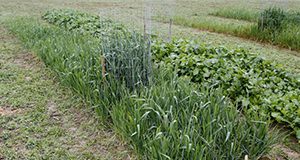
Many Floridians enjoy the opportunity to hunt, watch, or photograph white-tailed deer. Hunters and landowners often plant cool season forage plots both to attract wildlife and to provide a dependable food source. But where there is a high deer population or scarce food resources, deer may forage on food plots as soon as the plants emerge and before they become established. This fact sheet presents the results of research conducted at the UF/IFAS North Florida Research and Education Center in Quincy into the effectiveness of various strategies hunters and landowners can use to temporarily limit access to new food plots until the plants are well established and strong enough to attract and sustain hungry deer through the winter. Written by Holly Ober, Cheryl Mackowiak, and Ann Blount and published by the UF/IFAS Department of Wildlife Ecology and Conservation.
http://edis.ifas.ufl.edu/uw410
Facts about Wildlife Diseases: Rabies
 Rabies is a virus carried by mammals. It kills infected humans and animals if they are not treated shortly after exposure. Rabies can be prevented, but it cannot be cured once symptoms become evident. This 6-page fact sheet explains how rabies spreads, which animals can get it, how common it is, symptoms, what you can do to limit its spread and what to do in case of a possible rabies exposure. Written by Samantha M. Wisely and Holly K. Ober, and published by the UF Department of Wildlife Ecology and Conservation, June 2015.
Rabies is a virus carried by mammals. It kills infected humans and animals if they are not treated shortly after exposure. Rabies can be prevented, but it cannot be cured once symptoms become evident. This 6-page fact sheet explains how rabies spreads, which animals can get it, how common it is, symptoms, what you can do to limit its spread and what to do in case of a possible rabies exposure. Written by Samantha M. Wisely and Holly K. Ober, and published by the UF Department of Wildlife Ecology and Conservation, June 2015.
http://edis.ifas.ufl.edu/uw282
Managing Conflicts with Wildlife: Living with Deer
Though deer rarely pose problems for people, it is important to understand the issues associated with deer and human-deer interactions. This 4-page fact sheet describes the biology of Florida’s white-tailed deer, the hazards associated with deer, and how to minimize these risks. Written by William M. Giuliano, Holly K. Ober, Lauren Watine, and Raoul Boughton, and published by the UF Department of Wildlife Ecology and Conservation, December 2014.
http://edis.ifas.ufl.edu/uw398
Managing Conflicts with Wildlife: Living with Coyotes
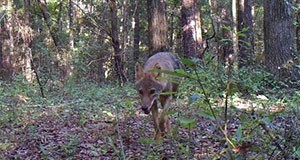 The omnivorous coyote is a relative newcomer to Florida that plays an important role in ecosystems and food webs. Of particular importance and possible benefit may be their potential ability to control populations of pest species such as some rodents. Although rare, there are situations where coyotes can become dangerous or damaging. In this 4-page fact sheet, we present some facts about coyotes, describe dangers and problems they may cause, and provide suggestions on how to cope with these issues. Written by Lauren Watine, William M. Giuliano, Holly K. Ober, Raoul Boughton, Alexander Gulde, Angeline Scotten, and published by the UF Department of Wildlife Ecology and Conservation, December 2014. (Photo: W. M. Giuliano, UF/IFAS)
The omnivorous coyote is a relative newcomer to Florida that plays an important role in ecosystems and food webs. Of particular importance and possible benefit may be their potential ability to control populations of pest species such as some rodents. Although rare, there are situations where coyotes can become dangerous or damaging. In this 4-page fact sheet, we present some facts about coyotes, describe dangers and problems they may cause, and provide suggestions on how to cope with these issues. Written by Lauren Watine, William M. Giuliano, Holly K. Ober, Raoul Boughton, Alexander Gulde, Angeline Scotten, and published by the UF Department of Wildlife Ecology and Conservation, December 2014. (Photo: W. M. Giuliano, UF/IFAS)
http://edis.ifas.ufl.edu/uw397
Managing Conflicts with Wildlife: Living with Panthers
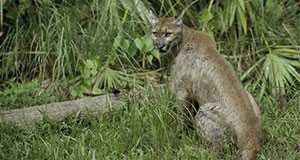 Panthers help maintain populations of some native species and control nuisance species such as wild hogs. They are generally secretive and rarely bother people, but there are rare situations where panthers can become dangerous or damaging. In this 4-page fact sheet, we present some facts about panthers, describe dangers and problems they may cause, and provide suggestions on how to cope with these issues. Written by William M. Giuliano, Holly K. Ober, Lauren Watine, Raoul Boughton, Eric Hellgren, Darrell Land, and Mark Lotz, and published by the UF Department of Wildlife Ecology and Conservation, December 2014.
Panthers help maintain populations of some native species and control nuisance species such as wild hogs. They are generally secretive and rarely bother people, but there are rare situations where panthers can become dangerous or damaging. In this 4-page fact sheet, we present some facts about panthers, describe dangers and problems they may cause, and provide suggestions on how to cope with these issues. Written by William M. Giuliano, Holly K. Ober, Lauren Watine, Raoul Boughton, Eric Hellgren, Darrell Land, and Mark Lotz, and published by the UF Department of Wildlife Ecology and Conservation, December 2014.
http://edis.ifas.ufl.edu/uw399
Managing Conflicts with Wildlife: Living with Wild Hogs
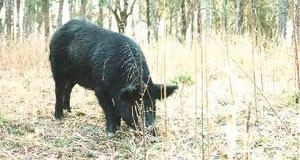 Wild hogs are a popular species, pursued and hunted by many throughout Florida. They are also an important food source for the endangered Florida panther.
Wild hogs are a popular species, pursued and hunted by many throughout Florida. They are also an important food source for the endangered Florida panther.
But there are situations where they can become dangerous or damaging. In this 4-page fact sheet, we present some facts about hogs, describe dangers and problems they may cause, and provide suggestions on how to cope with these issues. Written by William M. Giuliano, Holly K. Ober, Lauren Watine, Raoul Boughton, and Don Coyner, and published by the UF Department of Wildlife Ecology and Conservation, December 2014. (Photo: M.S. Smith)
http://edis.ifas.ufl.edu/uw400
Managing Conflicts with Wildlife: Living with Bears
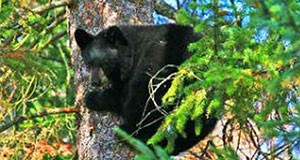 Black bears are omnivorous, enigmatic animals that help maintain healthy forests by dispersing seeds of plants they eat. Bear watching is a favorite pastime for many Floridians throughout the state. Bears are generally secretive and rarely a problem for people. But there are rare situations where they can become dangerous or damaging. In this 4-page fact sheet, we present some facts about bears, describe dangers and problems they may cause, and provide suggestions on how to cope with these issues. Written by William M. Giuliano, Holly K. Ober, Lauren Watine, Eric Hellgren, Raoul Boughton, and Dave Telesco, and published by the UF Department of Wildlife Ecology and Conservation, December 2014.
Black bears are omnivorous, enigmatic animals that help maintain healthy forests by dispersing seeds of plants they eat. Bear watching is a favorite pastime for many Floridians throughout the state. Bears are generally secretive and rarely a problem for people. But there are rare situations where they can become dangerous or damaging. In this 4-page fact sheet, we present some facts about bears, describe dangers and problems they may cause, and provide suggestions on how to cope with these issues. Written by William M. Giuliano, Holly K. Ober, Lauren Watine, Eric Hellgren, Raoul Boughton, and Dave Telesco, and published by the UF Department of Wildlife Ecology and Conservation, December 2014.
http://edis.ifas.ufl.edu/uw396
Managing Conflicts with Wildlife: Living with Alligators
 American alligators are found in only 10 states in the southeastern U.S. In most situations alligators do not harm people, but they can pose potential dangers to people in some situations. In this 3-page fact sheet, we present some facts about alligators, describe their potential threats to people and pets, and provide suggestions on how to cope with these risks. Written by Holly K. Ober, Harry J. Dutton, Allan R. Woodward, Lindsay J. Hord, and William M. Giuliano, and published by the UF Department of Wildlife Ecology and Conservation, November 2014.
American alligators are found in only 10 states in the southeastern U.S. In most situations alligators do not harm people, but they can pose potential dangers to people in some situations. In this 3-page fact sheet, we present some facts about alligators, describe their potential threats to people and pets, and provide suggestions on how to cope with these risks. Written by Holly K. Ober, Harry J. Dutton, Allan R. Woodward, Lindsay J. Hord, and William M. Giuliano, and published by the UF Department of Wildlife Ecology and Conservation, November 2014.
http://edis.ifas.ufl.edu/uw393
Managing Conflicts with Wildlife: Living with Frogs
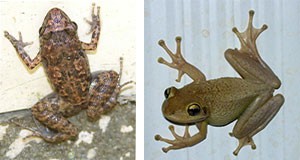 Frogs control garden pests such as insects and slugs and serve as a food source for many larger wildlife species. Research on the substances frogs secrete through their skins has even led to the creation of new painkillers and antibiotics. Most frogs in Florida are reclusive and harmless to people, but two species of frogs that have invaded Florida can be harmful to humans and their pets. This 4-page fact sheet presents some facts about native frogs, describes the problems invasive frogs cause, and provides suggestions on how to cope with problem frogs. Written by Steve Johnson, Holly K. Ober, and William M. Giuliano, and published by the UF Department of Wildlife Ecology and Conservation, November 2014. (Photos: Steve Johnson, UF/IFAS)
Frogs control garden pests such as insects and slugs and serve as a food source for many larger wildlife species. Research on the substances frogs secrete through their skins has even led to the creation of new painkillers and antibiotics. Most frogs in Florida are reclusive and harmless to people, but two species of frogs that have invaded Florida can be harmful to humans and their pets. This 4-page fact sheet presents some facts about native frogs, describes the problems invasive frogs cause, and provides suggestions on how to cope with problem frogs. Written by Steve Johnson, Holly K. Ober, and William M. Giuliano, and published by the UF Department of Wildlife Ecology and Conservation, November 2014. (Photos: Steve Johnson, UF/IFAS)
http://edis.ifas.ufl.edu/uw394
Managing Conflicts with Wildlife: Living with Snakes
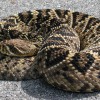 Snakes provide numerous benefits to people and to the environment, by controlling rat and mice populations in the environment, for example. Or in the laboratory, where pygmy rattlesnake venom research helped develop medicine to thin the blood of heart attack patients. Most snakes are secretive and rarely bother people, but there are situations where some snakes can become dangerous. In this 4-page fact sheet, we present some facts about snakes, describe dangers they may cause, and provide suggestions on how to cope with these dangers. Written by Holly K. Ober, Steve Johnson, and William M. Giuliano, and published by the UF Department of Wildlife Ecology and Conservation, November 2014. (Photo: Steve Johnson)
Snakes provide numerous benefits to people and to the environment, by controlling rat and mice populations in the environment, for example. Or in the laboratory, where pygmy rattlesnake venom research helped develop medicine to thin the blood of heart attack patients. Most snakes are secretive and rarely bother people, but there are situations where some snakes can become dangerous. In this 4-page fact sheet, we present some facts about snakes, describe dangers they may cause, and provide suggestions on how to cope with these dangers. Written by Holly K. Ober, Steve Johnson, and William M. Giuliano, and published by the UF Department of Wildlife Ecology and Conservation, November 2014. (Photo: Steve Johnson)
http://edis.ifas.ufl.edu/uw395
Native Plants That Benefit Native Wildlife in the Florida Panhandle
 The key to enhancing wildlife (and attracting it to your property) is to provide the resources wildlife need. This means supplying food, water, and cover within the space you own and manage. Because the needs of each wildlife species for food and cover vary from one season to the next, a mix of plant species is required to meet the needs of a species all year round. And because each species has different needs, attracting and maintaining a wide variety of wildlife year round requires a wide diversity of plants. A property owner interested in attracting wildlife should nurture a wide variety of native plants to ensure that there is a large assortment of food and cover options available all the time. This 8-page fact sheet was written by Holly K. Ober and Gary W. Knox, and published by the UF Department of Wildlife Ecology and Conservation, October 2013.
The key to enhancing wildlife (and attracting it to your property) is to provide the resources wildlife need. This means supplying food, water, and cover within the space you own and manage. Because the needs of each wildlife species for food and cover vary from one season to the next, a mix of plant species is required to meet the needs of a species all year round. And because each species has different needs, attracting and maintaining a wide variety of wildlife year round requires a wide diversity of plants. A property owner interested in attracting wildlife should nurture a wide variety of native plants to ensure that there is a large assortment of food and cover options available all the time. This 8-page fact sheet was written by Holly K. Ober and Gary W. Knox, and published by the UF Department of Wildlife Ecology and Conservation, October 2013.
http://edis.ifas.ufl.edu/uw384




